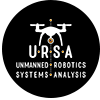URSA Supports ASSURE UAS: Provides data management and analysis capabilities required for sUAS traffic analysis in low-altitude airspace for ASSURE’s A50 project.
URSA is working with Ryan Wallace of Embry-Riddle to provide platform-agnostic, cloud-based storage, and analysis of large UAV related datasets and telemetry for the ASSURE A50 project.
The ASSURE A50 project aims to establish a framework for addressing the need to collect empirical data required to conduct sUAS traffic analysis in low-altitude airspace:
- Support efforts to accurately forecast sUAS growth
- Plan further sUAS airspace integration efforts
- Conduct risk assessments of proposed sUAS operations,
- Estimate compliance rates to existing and future regulations
“The ASSURE A50 project leverages data from multiple sources to develop an understanding of the safety risks in the national airspace system where small manned aircraft and unmanned aircraft are interacting,” said Wallace. “There are not effective data sources right now to analyze what is really going on in the national airspace system. We currently have sighting reports – which previous research has shown to be invalid.”
“We now have access to more accurate data about the true locations of manned and unmanned aircraft to better understand how they are interacting.
We are developing an understanding of how those interactions take place and the potential safety implications from those interactions.”
URSA’s customizable platform provides scalable vendor-agnostic data analytics capable of processing multi-source telemetry and geographical information systems (GIS) data.
URSA provides rapid pattern detection, data visualization, and automated reporting capabilities.
“The real power of URSA’s platform is its big data capabilities,” says Wallace. “In order to fully analyze the size of the dataset that we are analyzing on a national scale, you need much greater processing power, and storage.
URSA automates the process and allows holistic analysis – primarily the ability to integrate and explore multiple forms of telemetry based data with other sources of data not historically integrated until now such as: Weather information, UAS telemetry, aircraft telemetry, time information, sunrise and sunset.”
Before URSA we did not have the ease of combining multiple types of data – from a variety of sources – so that we could truly understand potential safety implications in the national airspace.
URSA allows us to break down problems individually and look at each component rather than just relying on evaluating data independently – we can see how it all interacts together.”
